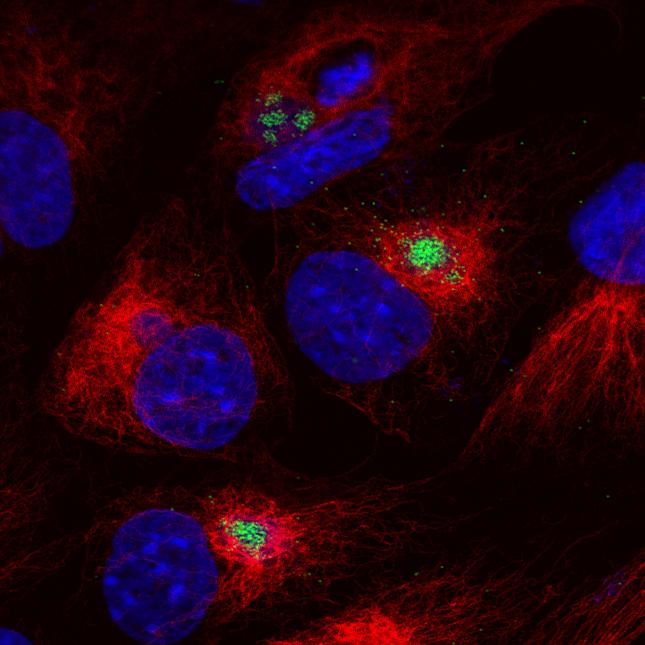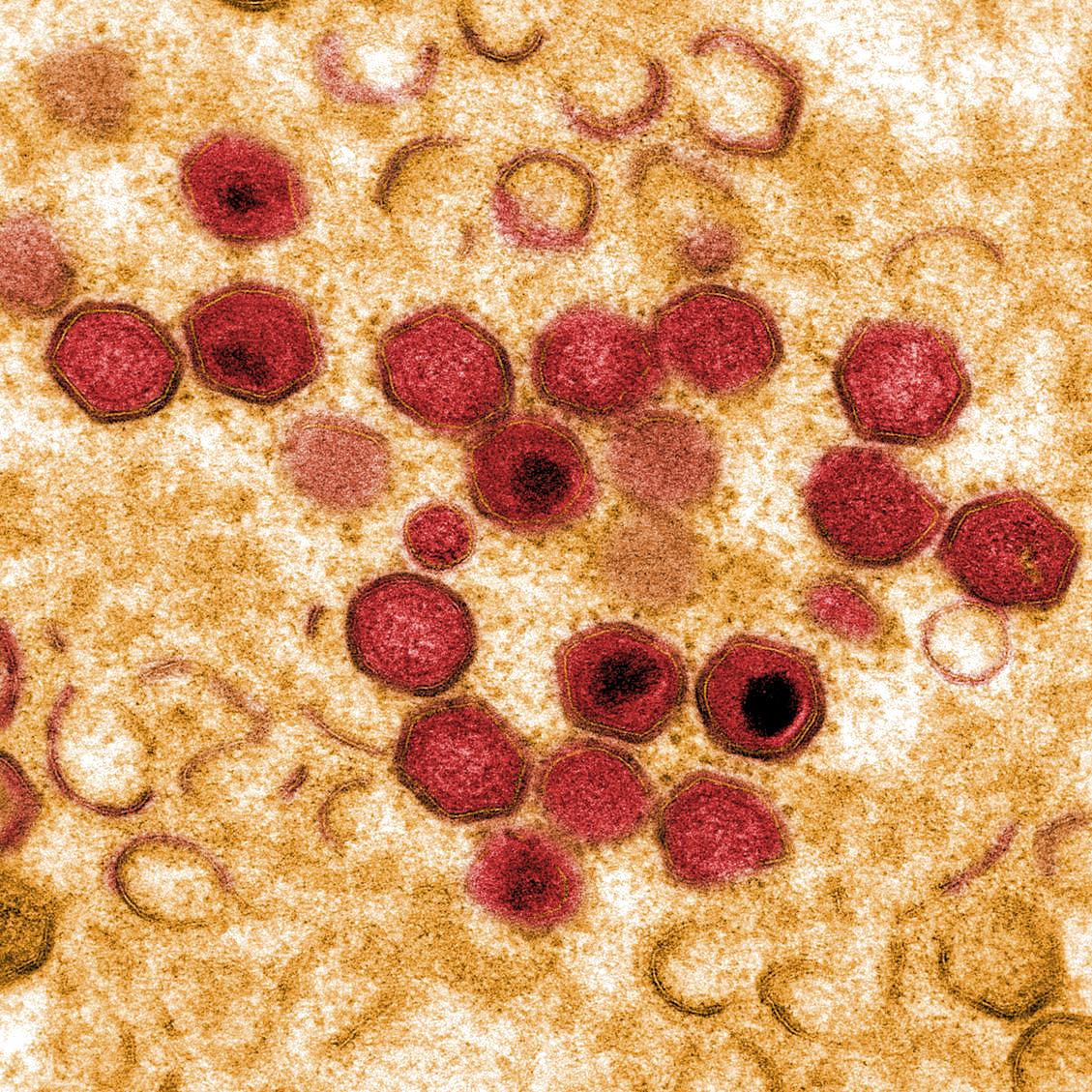African swine fever virus replication and genomics
African swine fever virus (ASFV) is a large icosahedral DNA virus which replicates predominantly in the cytoplasm of infected cells. The ASFV double-stranded DNA genome varies in length from about 170 to 193 kbp depending on the isolate and contains between 150 and 167 open reading frames. These are closely spaced and read from both DNA strands. The virus genome termini are covalently closed by imperfectly base-paired hairpin loops that are present in two forms that are complimentary and inverted with respect to each other. Adjacent to the termini are inverted arrays of different tandem repeats. Head to head concatemeric genome replication intermediates have been described. A similar mechanism of replication to Poxviruses has been proposed for ASFV. Virus genome transcription occurs independently of the host RNA polymerase II and virus particles contain all of the enzymes and factors required for early gene transcription. DNA replication begins in perinuclear factory areas about 6 h post-infection although an earlier stage of nuclear DNA synthesis has been reported. The virus genome encodes enzymes required for transcription and replication of the virus genome and virion structural proteins. Enzymes that are involved in a base excision repair pathway may be an adaptation to enable virus replication in the oxidative environment of the macrophage cytoplasm. Other ASFV genes encode factors involved in evading host defence systems and modulating host cell function. Variation between the genomes of different ASFV isolates is most commonly due to gain or loss of members of multigene families, MGFs 100, 110, 300, 360, 505/530 and family p22. These are located within the left terminal 40 kbp and right terminal 20 kbp. ASFV is the only member of the Asfarviridae, which is one of the families within the nucleocytoplasmic large DNA virus superfamily.
Back to publications

